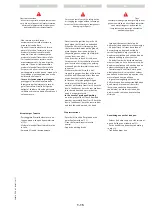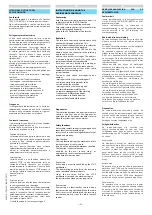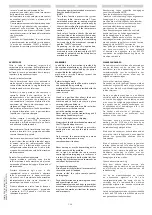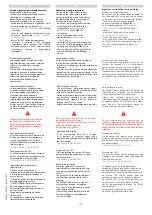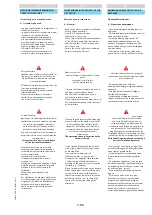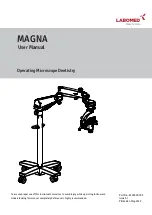
1-28
If the load status
indicator alarm is actived, do not carry out
the movements said to be “WORSENING”,
which are the following :
A - Extend the jib.
B - Lower the jib.
- If the load status indicator alarm is
actived, carry out in all security move
ments in the following order (Fig. P) :
1 - Fully retract the jib.
2 - If it’s necessary lift the jib
3 - Lower the jib in order to lay the load.
Lift truck with level corrector
- Correct the slope using the hydraulic
control and check the horizontal position
on the level before lifting the boom(See
chapter : INSTRUMENTS AND CONTROLS
in paragraph : 2 - DESCRIPTION).
Apart from the transverse slope of the
ground, several parameters can upset the
horizontal position of the lift truck.
• The tyre pressures.
• The stability of the ground.
• The balance of the load.
• Strong wind or stormy conditions.
Before any handling work, check the points
above and ensure that the lift truck is
completely horizontal
.
(See bubble level)
Als deze in alarm is
mag u in geen geval:
A - De arm uittrekken.
B - De arm omlaag halen.
- Als het instrument voor de staat van de
last in alarm is, de volgende verlichtende
manoeuvres verrichten, in deze volgorde
(Fig. P) :
1 - De arm zover mogelijk intrekken.
2 - Indien nodig de arm omhoog zetten
3 - De arm omlaag zetten om de last neer
te zetten.
Heftruck met hellingsregelaar.
- De hellingshoek corrigeren met behulp
van het hydraulische bedieningselement
en de horizontale stand op de waterpas
controleren voor de arm op te heffen
(zie hoofdstuk: CONTROLE- EN
BEDIENINGSORGANEN) in deel: 2 -
BESCHRIJVING).
Niet alleen de dwarse helling van het
terrein beïnvloedt de horizontale positie
van de heftruck, maar ook bijvoorbeeld:
• De staat van de banden en de
bandenspanning.
• De stabiliteit van de grond.
• Het evenwicht van de lading.
• Harde wind of storm.
Voor iedere willekeurige beweging, de
bovengenoemde situaties checken en
controleren of de heftruck
goed horizontaal
staat
.
(Controleren op de waterpas)
Quando l’indicatore di stato di carico è in
allarme, non bisogna in alcun caso:
A - Far uscire il braccio.
B - Abbassare il braccio.
- Se l’indicatore di stato di carico è in
allarme, effettuare i movimenti sgravanti,
nel seguente ordine (Fig. P) :
1 - Rientrare il braccio al massimo.
2 -Se necesario alzare il braccio
3 - Abbassare il braccio in modo da
posare il carico.
Carrello elevatore con correttore
d’inclinazione.
- Correggere l’inclinazione, agendo
sul comando idraulico e verificare
l’orizzontalità sulla livella prima di sollevar
il bracio(Vedi capitolo : STRUMENTI DI
CONTROLLO E DI COMANDO, nella parte :
2 - DESCRIZIONE).
Oltre alla pendenza trasversale del
terreno, altri parametri possono incidere
sull’orizzontalità del carrello elevatore.
• Lo stato e la pressione dei pneumatici.
• La stabilità del terreno.
• L’equilibrio del carico.
• Il vento forte o la tempesta.
Prima di ogni movimentazione, controllare
le condizioni sopraelencate e verificare
che il carrello elevatore sia
perfettamente
orizzontale
.
(Controllare sulla livella a bolla)
IT
EN
NL
648870 IT-EN-NL (04/05/2015)
P
Summary of Contents for PRIVILEGE MRT 3255 PLU
Page 2: ......
Page 4: ......
Page 5: ......
Page 6: ......
Page 8: ......
Page 51: ...2 DESCRIZIONE DESCRIPTION BESCHRIJVING...
Page 52: ......
Page 173: ...3 MANUTENZIONE MAINTENANCE ONDERHOUD...
Page 174: ......
Page 279: ...648747 IT EN NL 29 08 2013...


